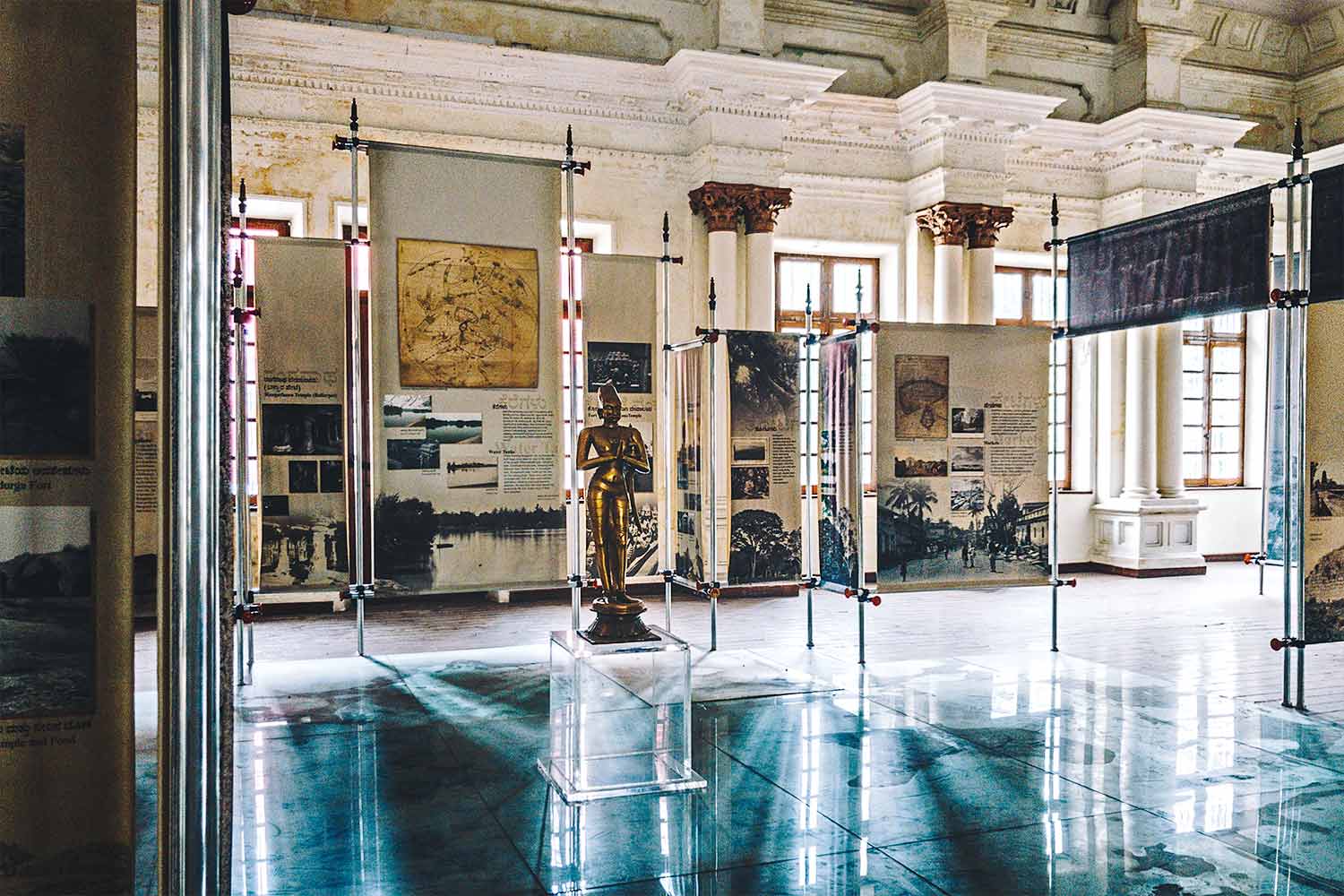The Yelahanka Clan and The Mayo Hall Museum
The emperor was Krishnadevaraya, and Kempegowda, a trusted vassal. Kempegowda asked to establish a new city, a mercantile centre. Krishnadevaraya said yes.

I was the lone visitor. Two ladies came out the main door that leads from the porch to the museum upstairs. They looked like staff. “Nobody inside,” they said. “Repairs. The repair fellow broke his arm. He’s gone home.” There wasn’t a regular guard, but that wasn’t a problem, as I saw in a moment. The Mayo Hall Museum has no antiquity save the immovable building.
There’s one lone artefact in the hall, at its centre. It is a statuette of Kempe Gowda in brass, a lean and wiry form of the ruler in the attire and aspect of a devotee, hands folded and eyes shut in bhakti. A sword dangles from his left shoulder, close to the armpit. The artist exercising his license, I first reckoned. Then I mimed drawing a sword with the scabbard-mouth at the armpit. It appeared to work: The scabbard would’ve to be pushed back, gripped under the arm, and the sword pulled forward, instead of upward.
The second exhibit is a glass-topped map on the floor that you walk on. Obliterated by shifting flares of light as I moved about, the map at that moment proved more novel than informative.
The third and last exhibit is a series of flexes that tell the history of Bangalore under the Yelahanka clan. The flexes are mounted around the statuette of Kempegowda. The museum memorialises Kempegowda, undisputed founder of Bengaluru — and Kempegowda’s Yelahanka clan, which ruled in this region for 497 years, sometimes as vassals, occasionally as sovereigns, from 1230 until 1727.
The first Yelahanka was Devarasagowda. He established himself at the time of the Hoysala, as a vassal to him. In a short time, the last Hoysala fell to the Turk. The Turk stuffed Hoysala’s carcass with hay and hung it at the gate of the Madurai fort.
Two Yelahankas passed. The fourth Yelahanka was Bhairadeva II. In his time the Vijayanagara empire was nascent, and Bhairadeva II participated in its early growth.
The Vijayanagara Empire reached its zenith at the time of the seventh Yelahanka, Kempegowda, the Elder. The emperor was Krishnadevaraya, and Kempegowda, a trusted vassal. Kempegowda requested permission to establish a new city in his realm, to serve as a mercantile centre, and Krishnadevaraya said yes. That city was Bengaluru, equidistant from the sea on the west and the east, on a plateau in jungle country, with pleasant weather all year round. The empire was teeming with the finest craftsmen, traders, warriors, artists, and mercenaries. Kempegowda invited traders to his new city, built a walled marketplace — the pete — for them, and sank wells and tanks and made Bengaluru a beautiful place to work and live in. Successful and grateful, he built temples across the city in thanksgiving.
The next two Yelahankas — Kempegowda II and Kempegowda III — furthered the Elder’s works.
But Vijayanagara’s time had to end, too. Aged Ramaraya, its last ruler, was defeated by a united front of five Bahamani kingdoms. The year was 1563. He was beheaded even as the battle raged, and the severed head was held up for all to see. With that stroke a two-century-old prosperous empire crumbled, never to rise again. The Bahamanis had no wish to rule Vijayanagara. They plundered and left.
With the empire gone, the Yelahanka found himself a sort of sovereign, surrounded by hostile neighbours hungry to expand. He fought and won and then lost — he was tiring.
The tenth Yelahanka was Kempayya. He was captured in the Savandurga fort by Doddakrishnaraja of neighbouring Mysore, and thrown into the dungeon at Srirangapattana. His cell being lower than the bed of river Kaveri close by, Kempayya didn’t last long. He died in 1727, and the 497-year-rule of the Yelahankas was forever over.
The story of Mayo Hall itself begs narration.
In 1872, when Lord Mayo was viceroy, having taken charge in 1869. En route somewhere by sea route, he halted at the Andaman Islands, where the British ran a jail that mostly held political prisoners, among them the vanquished in the Mutiny of 1857.
Mayo went into the prison, where a convict stabbed him. That convict was Sher Ali, and his motive was to avenge his father who’d fallen in the Anglo-Afghan War. Mayo perhaps didn’t deserve punishment for Sher Ali’s tragedy, he appears to have been the reforming kind of administrator, an Indophile even. But he was British, and a viceroy, and so there’s an argument for Sher Ali as well.
Sher Ali was quickly hanged, and Mayo’s body was shipped to Dublin, where they gave the deceased his due in full measure.
Meanwhile, in Bengaluru, the British were constructing an administrative office complex for their cantonment, in Greco Roman style, aiming to make it their best building in South India. They named it after their just-killed viceroy.
